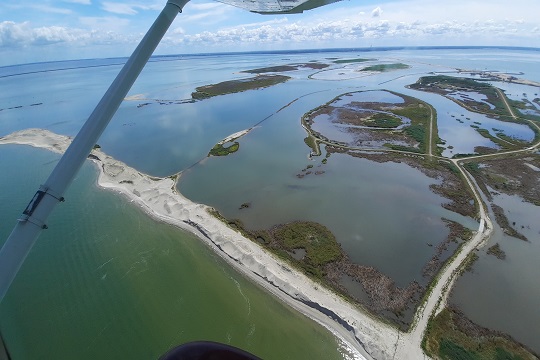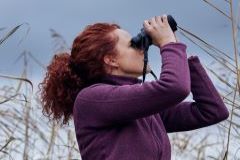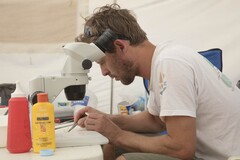
Wetlands Lake IJsselmeer
Marker Wadden
Marker Wadden have been constructed as a bird paradise. We are involved in bird research and evaluations of ongoing studies. Since 2017, we have been investigating bird colonization and breeding success of indicator species like Kentish plover, common tern, little tern and pied avocet. In addition, we study habitat use, food choice and we colour ring various bird species to determine the movements. We assist Natuurmonumenten with the coordination of breeding birds and waterbird census. We work on behalf of KIMA, Natuurmonumenten and Sovon and many volunteers are involved in it.
Breeding ecology of pied avocet, common tern and little tern
Every year we publish an overview of numbers, breeding success, food and habitat choice of pied avocet, little tern and common tern. Marker Wadden are colonised by these species of which national and international important numbers are present. This shows the importance of pioneer and their success. The reproduction of pied avocets was initially high but we see it gradually decline.
download report : Common tern and pied avocet 2018
download report : Little tern, common tern and pied avocet 2019
download report: Common tern, little tern 2020
download report : Pied avocet 2020
Annual report of wintering birds, migrants and breeding birds
At Marker Wadden, all waterbirds are monthly counted and the breeding bird population is mapped. Staging migrant songbirds are counted such as the massive numbers of sand martins in late summer. The counts are carried out by volunteers. We report annually on the results of the birds in the bird paradise.
download report : Breeding and wintering birds at Marker Wadden 2017-2019
download report : Breeding and wintering birds at Marker Wadden 2019-2020
download report : Breeding and wintering birds at Marker Wadden 2020-2021
download report : Breeding and wintering birds at Marker Wadden 2021-2022
download report : Breeding and wintering birds at Marker Wadden 2022-2023
download report : Breeding and wintering birds at Marker Wadden 2023-2024
Aerial surveys on foraging distribution of common terns on open water
In July 2020, the distribution of common terns was mapped from an airplane along transects by counting common terns foraging on the open water of Lake IJsselmeer and Markermeer. At the same time, WMR measured the availability of prey fish at common tern feeding sites. Together with the research in the colonies on breeding success, chick growth and prey choice, we learn more about what is important for a sustainable population of common terns.
download report : Availability of fish for common terns around Marker Wadden in July 2020 - report WMR including results of the aerial surveys on the foraging distribution of common terns
Evaluation of nature research Marker Wadden
The created nature islands of Marker Wadden bring new life to the Markermeer. This is evident from the first research results. We interviewed researchers from Deltares, Rijkswaterstaat, Sportvisserij Nederland, Witteveen + Bos, NIOO, Wageningen Marine Research, and Natuurmonumenten. The early results show that the area is significant for nationally threatened pioneer biotopes. And there are indications that the archipelago influences the water and primary production in the surroundings.
download report : Ecological research Marker Wadden_2017-2019. Report phase 1
De Levende Natuur special edition about Nieuw Land National Park
Nieuw Land National Park is located in Flevoland and includes appealing nature reserves such as Lepelaarplassen, Oostvaardersplassen and Marker Wadden. Using three bird species – avocet, common tern and spoonbill – Lowland Ecology Network examined how they use the different parts of the park. The birds were fitted with transmitters, and now we know where they feed, rest and how this changes throughout the season. The information is presented in four articles in a special issue of Levende Natuur (November 2024).
download article : Plenty of non-biting midgets for avocets
download article : Semi-open marsh vegetation ideal for avocet chicks
download article : New breeding and foraging area for common terns
download article : Spoonbills benefit from new shallow areas

Other Wetlands Lake IJsselmeer projects
Lowland Ecology Network
The Lowland Ecology Network is a network of freelancers who focus on ecological research, advice and communication. The emphasis is on nature protection of wetlands at home and abroad. Each participant has specific expertise and as a network we can respond fast and quickly solve complex issues. We are wel connected with experts on subjects such as photography / film, design and nature legislation.
Network members









